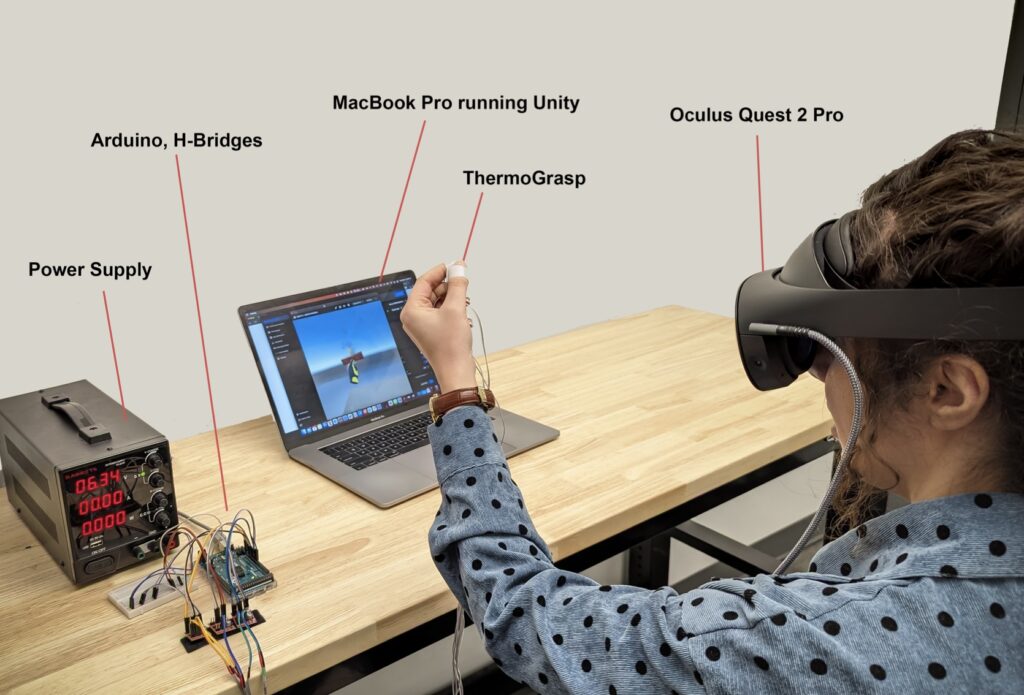
Imagine playing Half-Life: Alyx and feeling the gun heat up in your hand as you take down The Combine. Or operating a robot through augmented reality and feeling coldness on your fingers when you get close to exceeding the robot’s limits. A prototype device called ThermoGrasp brings that thermal feedback to the mixed reality applications.
ThermoGrasp is a wearable thermal feedback system designed for virtual reality and augmented reality, created by Arshad Nasser and Khalad Hasan of the University of British Columbia. It consists of thermoelectric modules attached to the user’s fingers with Velcro straps. Those are capable of creating thermal sensations — both warm and cold — in response to what happens in the virtual world. Those sensations can relate to any condition or event that the developer chooses, whether for immersion or utility.
Nasser and Hasan built the prototype using an Arduino Mega 2560 board, which controls the thermoelectric modules through custom H-bridge drivers. Those thermoelectric modules are Peltier devices, which are normally associated with cooling. They can create a cooling feeling on the skin, but can also do the opposite and produce a warm feeling. The Arduino controls the drivers through pulse-width modulation (PWM), allowing for granular adjustment. The thermoelectric modules are capable of changing temperature at a rate of 3.5°C per second and so can produce a noticeable sensation within just a couple of seconds.
In testing, users found that cool sensations were easier to detect than warm sensations, but that both were useful and increased immersion.
Image credit: A. Nasser et al.
The post ThermoGrasp brings thermal feedback to virtual reality appeared first on Arduino Blog.
